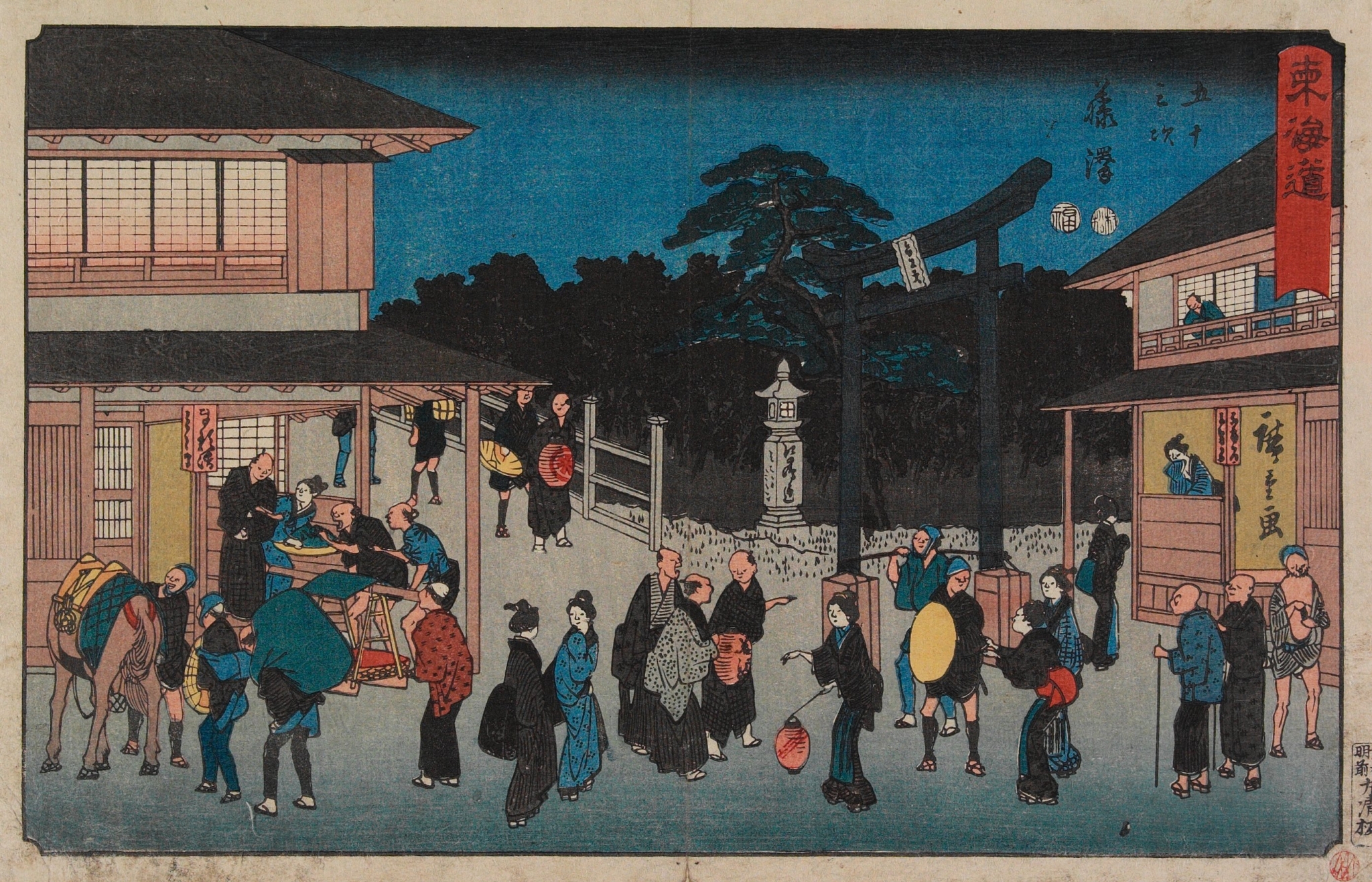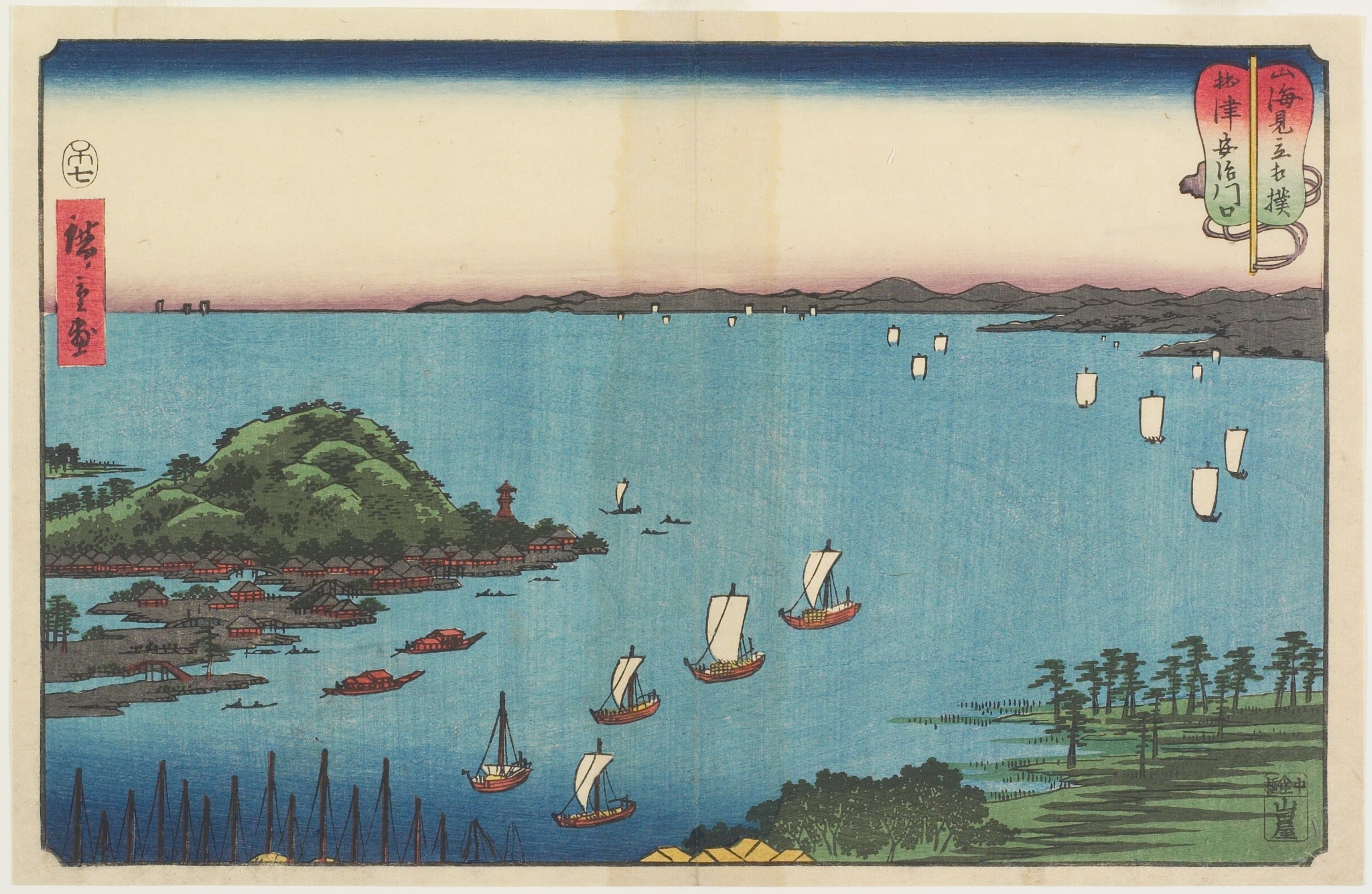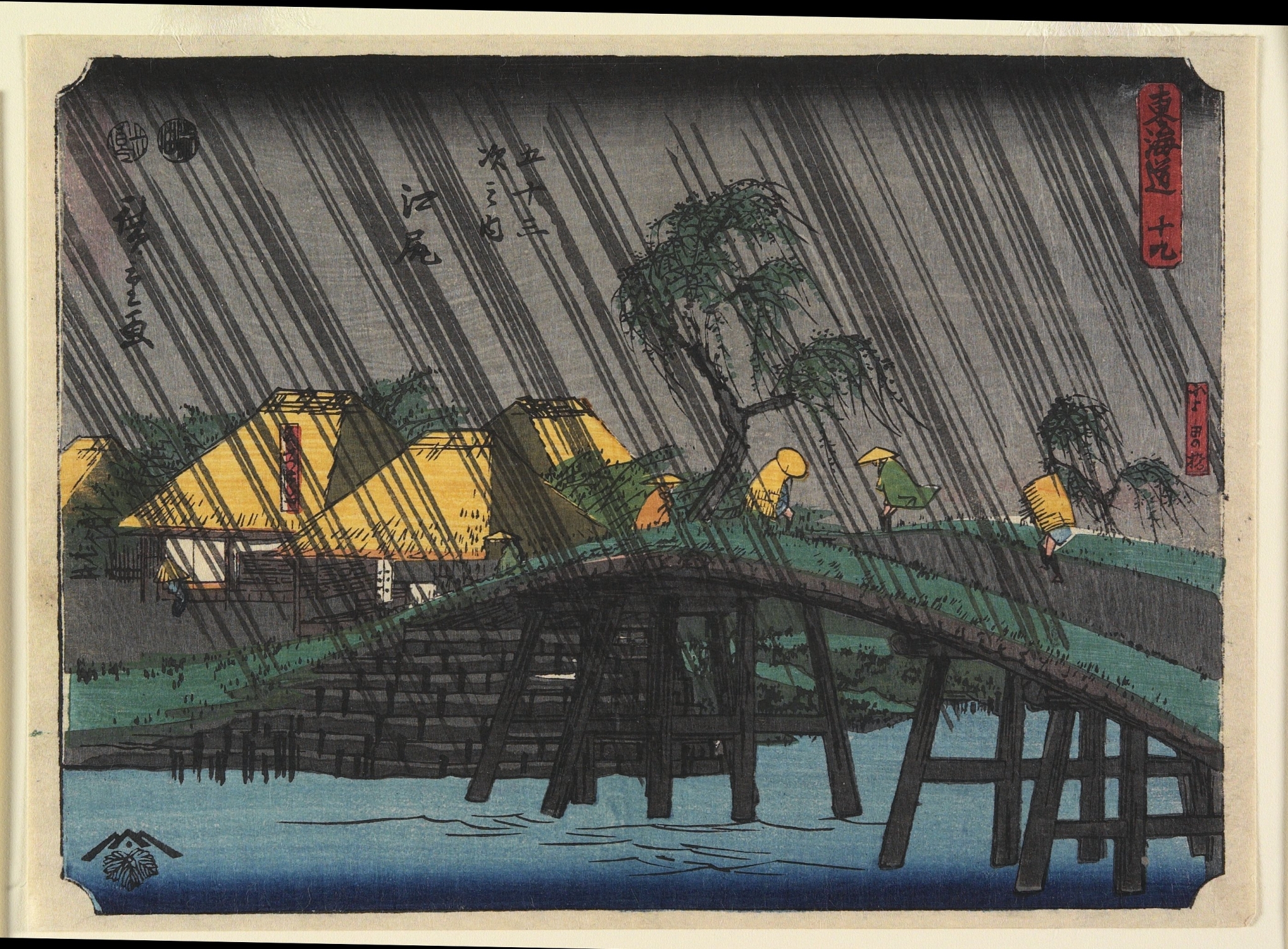
“Cherry Blossoms in Full Bloom at Goten-yama,” c. 1840-42. (Photo: Public domain, via Minneapolis Institute of Art.)
With rich colors and distinct aesthetics, Japanese woodblock prints blossomed between the 17th and 19th centuries, in the Edo era. During this time, Japan was mostly closed off from the outside world, and only a handful of Dutch and Chinese traders were allowed inside with severe restrictions. So, the style of ukiyo-e, which literally means “pictures of a floating world,” offers a window into what life was like before the country reopened.
Among the many masters of this trade, Utagawa Hiroshige (born Andō Hiroshige) was one of the most influential. Not only was he incredibly prolific, producing more than 8,000 woodblock prints during his lifetime, but he also created some of the best-known images of Japanese life during the Edo era. Some of his most famous series include The Fifty-Three Stations of the Tōkaidō and One Hundred Famous Views of Edo, both of which explored composition and subtle use of color.
Now, fans of the historical art form can learn more about the process and even look at prints in close detail from their home. The Minneapolis Institute of Art recently made their extensive digital collection of woodblock prints by Hiroshige available to view and even download via their website. Within this 1,000+ image archive are examples of his landscapes, cityscapes, portraits, and more—many of which influenced Impressionist and Post-Impressionist painters like Monet and Van Gogh.
Visit the Minneapolis Institute of Art’s website to view and download Hiroshige’s woodblock prints.
Download more than 1,000 Japanese woodblock prints by Edo-era master Utagawa Hiroshige.

“No.7 Fujisawa,” 1847-1852. (Photo: Public domain, via Minneapolis Institute of Art.)

“Mouth of the Aji River in Settsu Province,” 1858, 7th month. (Photo: Public domain, via Minneapolis Institute of Art.)

“No.19 Ejiri,” 1847-1852. (Photo: Public domain, via Minneapolis Institute of Art.)
Minneapolis Institute of Art: Website | Facebook | Instagram
h/t: [Open Culture]
Related Articles:
14 Paris Museums Place 100,000 Works of Art Online for Free Download
You Can Now Download 435 Bird Illustrations by Legendary John James Audubon for Free
You Can Now Download and 3D Print 18,000 Famous Sculptures and Artifacts
